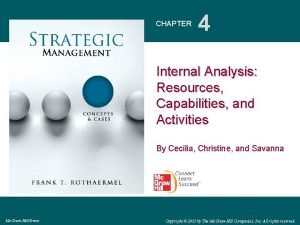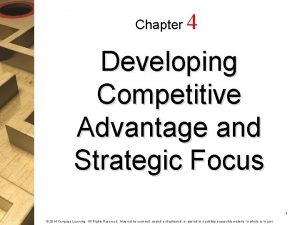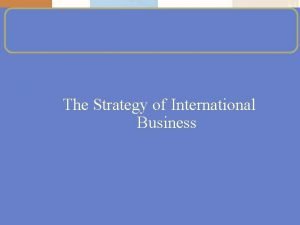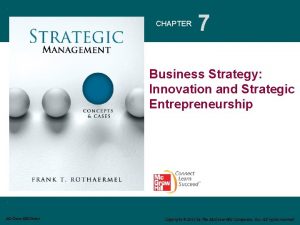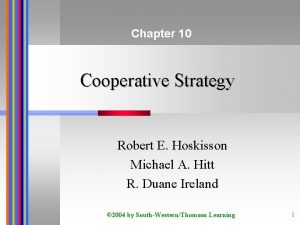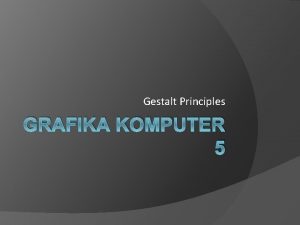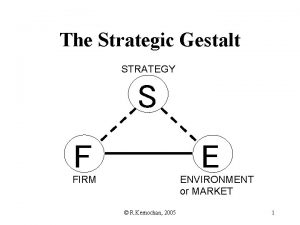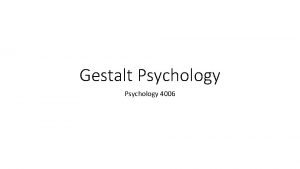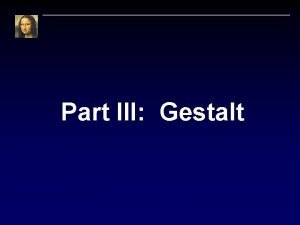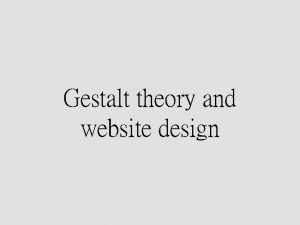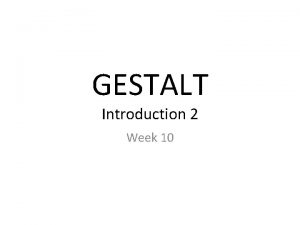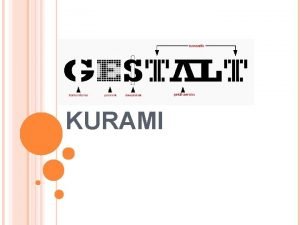The Strategic Gestalt STRATEGY S E F FIRM











- Slides: 11

The Strategic Gestalt STRATEGY S E F FIRM ENVIRONMENT or MARKET © R. Kernochan, 2005 1

Strategic Gestalt: Differentiation STRATEGY E F FIRM ENVIRONMENT or MARKET © R. Kernochan, 2005 2

Differentiation Strategy • It is: selling products or firm attributes that have unique value for the customer – Above average returns come from • charging a premium price for desired products and/or product features • selling more at the same price • dampening cyclical downturns • For the firm, it means: Working to obtain a customer-valued difference relative to the competition © R. Kernochan, 2005 3

Generic Strategies & the Concept of Proximity (Parity) • Cost Leader firms compete with Differentiators & vice-versa. • There is a limit to how much extra consumers will pay for valued features, or how many features they will give up to pay less. • Hence concept of promimity/parity or closeness. © R. Kernochan, 2005 4

Proximity (Parity) Generic Strategy Type of Proximity Cost Leadership Feature Differentiation Cost © R. Kernochan, 2005 5

Differentiation Strategy: Important Issue • Differentiation is poorly specified, “all other. ” – Very general description – Cost Leadership could be form of differentiation – Doesn’t distinguish among different types of “differentiation” • Remedy: ALWAYS specify what kind of differentiation strategy: – Company is seeking CA based on what? – Examples: • Coca-Cola based on image, association with energy, fun • Ford: Quality is Job 1 (but is it? ) • Marlboro: lifestyle, personal qualities © R. Kernochan, 2005 6

Core Question: If all firms focus on differentiation to some degree, • how do I tell which ones are following a differentiation strategy? • how do I tell which ones have a differentiation competitive advantage? © R. Kernochan, 2005 7

Some Clues: what will I see? (1) • Above average returns (no CA without AAR) • Most firms seek, perceive differences – Not all differences are valued by the customer • Dominant cultural values concern product differences & customer value for those diff. – “customer-driven” firm – “customer comes first” at all levels of the org. © R. Kernochan, 2005 8

Some Clues: what will I see? (2) • Firm Actions – Investments in the value chain that increase buyer value: new products, product features, perceived differences. – Small changes in cost can have large buyer effects – Examples – Mergers to obtain new competencies, products – Quality that increases perceived differences – Other Actions • R & D investments: product emphasis • Sometimes: speed to market © R. Kernochan, 2005 9

Uniqueness Drivers • Policy changes: what activities to perform and how to perform them • Linkages: – Within value chain – Backwards or forwards in chain – Important if the way one activity is performed affects the performance of another © R. Kernochan, 2005 10

Some Examples of Policy Changes • Product features • Product performance • Intensity of activity (e. g. , advertising) • Content of activity • Technology employed • • • Input quality Personnel procedures Personnel skill Personnel experience Information employed to control activity © R. Kernochan, 2005 11
 Describes a firm's ability to create deploy modify
Describes a firm's ability to create deploy modify Developing competitive advantage and strategic focus
Developing competitive advantage and strategic focus A firm pursuing a transnational strategy would believe that
A firm pursuing a transnational strategy would believe that Multi domestic strategy
Multi domestic strategy Resource based model
Resource based model Strategic analysis and choice in strategic management
Strategic analysis and choice in strategic management Strategic fit vs strategic intent
Strategic fit vs strategic intent Strategic complement
Strategic complement Market entry modes for international businesses (chapter 7)
Market entry modes for international businesses (chapter 7) What is functional strategy
What is functional strategy Business strategy innovation and strategic entrepreneurship
Business strategy innovation and strategic entrepreneurship Cooperative strategy in strategic management
Cooperative strategy in strategic management
